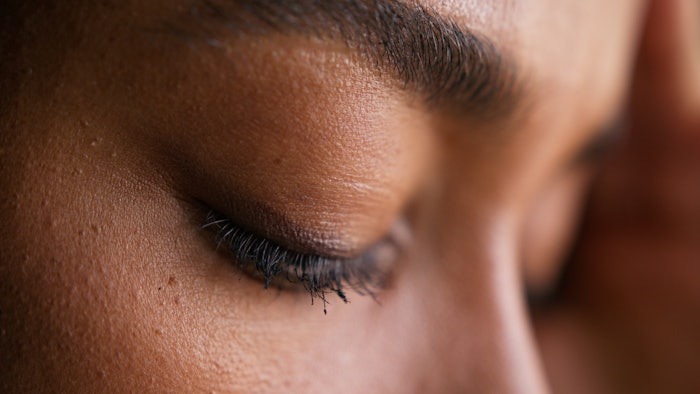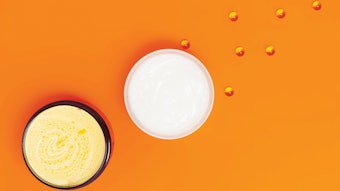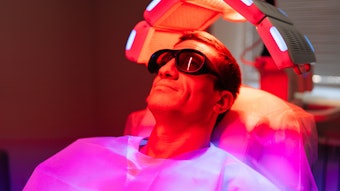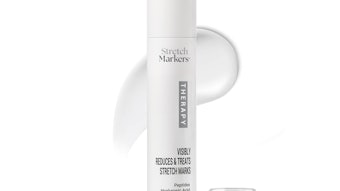
The relationship between psychological stress and skin health represents one of the most fascinating intersections in dermatology, psychology and aesthetics. As estheticians, understanding this bidirectional connection is crucial for providing comprehensive care that addresses not only surface-level concerns but also the underlying factors that perpetuate skin dysfunction. Chronic stress triggers a cascade of physiological responses that directly compromise skin barrier function, accelerate aging processes and exacerbate inflammatory conditions¹.
Response Type
Timeline
Primary Triggers
Key Manifestations
Recovery Period
Products that incorporate aromatherapeutic and mood-enhancing ingredients designed to influence psychological well-being through sensory experience and olfactory pathways.
Log in to view the full article
Introduction: The Stress-Skin Connection
The relationship between psychological stress and skin health represents one of the most fascinating intersections in dermatology, psychology and aesthetics. As estheticians, understanding this bidirectional connection is crucial for providing comprehensive care that addresses not only surface-level concerns but also the underlying factors that perpetuate skin dysfunction. Chronic stress triggers a cascade of physiological responses that directly compromise skin barrier function, accelerate aging processes and exacerbate inflammatory conditions¹.
The hypothalamic-pituitary-adrenal (HPA) axis activation during stress leads to elevated cortisol levels, which impair collagen synthesis, disrupt the skin’s natural repair mechanisms and compromise the microbiome balance¹. This understanding has revolutionized how we approach skin care, moving beyond traditional topical treatments to embrace functional cosmetics that address the root causes of skin stress while supporting the body’s natural resilience mechanisms.
Understanding Stress Triggers
Stress triggers encompass a broad spectrum of physiological, psychological and environmental factors that activate the body’s stress response system. Acute stressors such as work deadlines, relationship conflicts or major life changes can cause immediate skin reactions, including flushing, increased oil production and inflammatory flares2. However, chronic stress triggers pose the greatest threat to skin health, including prolonged work pressure, sleep deprivation, poor dietary habits and exposure to environmental toxins. The skin’s response to these triggers involves a complex neuroimmunoendocrine pathway, where stress hormones like cortisol and catecholamines directly influence sebaceous gland activity, mast cell degranulation and inflammatory mediator release2. Modern lifestyle factors have intensified these triggers, with digital device exposure disrupting circadian rhythms, processed foods creating inflammatory responses and environmental pollutants overwhelming the skin’s natural antioxidant capacity. Recognizing these multifaceted triggers allows estheticians to develop more targeted treatment protocols that address both immediate symptoms and underlying stressors.
Describing Stressed Skin
Stressed skin presents with distinct characteristics that reflect the underlying physiological disruption caused by chronic HPA axis activation. The most common manifestations include compromised barrier function, evidenced by increased transepidermal water loss, heightened sensitivity and impaired wound healing capacity1. Understanding these multifaceted presentations enables estheticians to recognize stressed skin patterns and tailor interventions accordingly. Figure 1 illustrates the four primary categories of stressed skin characteristics, with detailed subcategories providing comprehensive clinical definitions.
 Figure 1: Stressed Skin Characteristics1, 3Original graphic courtesy of Blyumin-Karasik.
Figure 1: Stressed Skin Characteristics1, 3Original graphic courtesy of Blyumin-Karasik.
Response Type | Timeline | Primary Triggers | Key Manifestations | Recovery Period |
| Acute Stress Response | Minutes-Hours | Immediate stressors, environmental shock | Flushing, oil surge, immediate sensitivity | Hours-Days |
| Chronic Stress Impact | Weeks-Years | Sustained lifestyle stress, poor sleep | Barrier dysfunction, accelerated aging | Weeks-Months |
Categories of Functional Cosmetics: A Holistic Approach
Functional cosmetics represent an evolution of skin care philosophy, incorporating bioactive ingredients that support the skin’s natural physiological processes while addressing stress-related dysfunction. In the table below, you will find a summary of the categories of functional cosmetics as well as their definition, role in skin care and examples.
| Category | Definition/Focus | Holistic Role in Skin Care | Examples |
| Adaptogenic Cosmetics4 | Formulations containing botanical extracts that help the skin adapt to and resist various stressors by modulating the body's stress response at the cellular level. | Support cellular resilience through antimicrobial antioxidant, anti-inflammatory, and barrier-repairing modes of action, reduce cortisol-induced inflammation, enhance the skin's natural ability to cope with environmental and psychological stressors while promoting homeostasis. |
|
| Psychocosmetic5 | Products that incorporate aromatherapeutic and mood-enhancing ingredients designed to influence psychological well-being through sensory experience and olfactory pathways. | Address the emotional component of skin health, reduce stress through sensory pleasure, support mood regulation and create positive feedback loops between mental state and skin appearance. |
|
| Neurocosmetic6-8 | Advanced formulations containing peptides and compounds that interact with the skin's nervous system to modulate sensory perception and stress-induced inflammatory as well as neurogenic responses. | Target skin-brain communication pathways, reduce stress-induced neurogenic inflammation, modulate pain and itch sensations and promote calming neurotransmitter activity. |
|
| Somatic Skin Care9 | Body-mind integrated approach using tactile enhanced textures, temperature variations, aromatherapy and application techniques that engage the nervous system to reduce physical tension and stress manifestations. | Release stored physical tension in facial muscles, improve lymphatic drainage, enhance mind-body awareness and use touch therapy principles to activate parasympathetic responses. |
|
| Barrier Repair and Antioxidant Systems10-11 | Advanced delivery systems combining immediate barrier restoration with sustained antioxidant protection to address stress-induced structural damage and ongoing oxidative challenges. | Provide immediate relief for compromised barriers, protect against ongoing oxidative stress, support long-term structural integrity and create a foundation for other functional ingredients. |
|
Conclusion
The integration of stress-science understanding with functional cosmetics represents a shift in aesthetic practice, moving from reactive symptom management to proactive wellness support.
Successful treatment of stressed skin requires a holistic approach that combines targeted topical interventions with lifestyle counseling, stress management techniques and long-term barrier restoration strategies.
For aesthetic providers, embracing this comprehensive appreciation can help provide more effective treatments while educating clients about the fundamental connections between their daily stressors and skin health. The future of aesthetic practice lies in this integrative approach, where functional cosmetics serve as tools for supporting the skin’s innate wisdom while addressing the complex interplay between mind, body and skin. By recognizing stressed skin as a systemic condition rather than merely a cosmetic concern, we can guide clients toward sustainable solutions that promote both immediate improvement and long-term skin resilience.
 Holistic skin care takes into account the interplay between lifestyle, stress and barrier health.Original image courtesy of Blyumin-Karasik.
Holistic skin care takes into account the interplay between lifestyle, stress and barrier health.Original image courtesy of Blyumin-Karasik.
Examples of holistic skin care currently available (many of these functional cosmeceuticals overlap):
- Adaptogenic: Mystro Active Balancing Serum, Stamina Intention Moisturizer, Topical Skin Renewal Eye Cream
- Psychocosmetics: XOMD Arouse Moodceutical Moisturizer, Stamina Mist, Selfmade Sad Ritual
- Neurocosmetics: Avene Tolerance Control Cream, Skinceuticals PTIOX, Revision Skincare CMT Cream
- Somatic skin care: Kate McLeod Daily Stone, Osmosis Purify, Stamina Mask
- Antioxidant barrier repair: Topical Skin Facial Oil, Epicutis Hyvia Cream, Neova Power Defense
References
1. Chen Y, Lyga J. Brain-skin connection: stress, inflammation and skin aging. Inflamm Allergy Drug Targets. 2014;13(3):177-190. doi:10.2174/1871528113666140522104422
2. Arck PC, Slominski A, Theoharides TC, Peters EM, Paus R. Neuroimmunology of stress: skin takes center stage. J Invest Dermatol. 2006;126(8):1697-1704. doi:10.1038/sj.jid.5700104
3. Gueniche A, Valois A, Salomao Calixto L, et al. A dermocosmetic formulation containing Vichy volcanic mineralizing water, Vitreoscilla filiformis extract, niacinamide, hyaluronic acid, and vitamin E regenerates and repairs acutely stressed skin. J Eur Acad Dermatol Venereol. 2022;36 Suppl 2:26-34. doi:10.1111/jdv.17785
4. Liu XX, Chen CY, Li L, et al. Bibliometric Study of Adaptogens in Dermatology: Pharmacophylogeny, Phytochemistry, and Pharmacological Mechanisms. Drug Des Devel Ther. 2023;17:341-361. Published 2023 Feb 6. doi:10.2147/DDDT.S395256
5. Fabi SG, Cattelan L, Caughlin B, Pérez JS, Cirrincione M, Dayan S. Unlocking the psycho-social-dermal axis: A double blinded randomized placebo controlled study unveiling the influence of a novel topical formulation on skin quality, attractiveness, quality of life, and sexual satisfaction. J Cosmet Dermatol. 2024;23(9):2905-2917. doi:10.1111/jocd.16496
6. Haykal D, Berardesca E, Kabashima K, Dréno B. Beyond beauty: Neurocosmetics, the skin-brain axis, and the future of emotionally intelligent skincare. Clin Dermatol. 2025;43(4):523-527. doi:10.1016/j.clindermatol.2025.05.002
7. Dobos, Kelly A. Beauty and the brain: how the nervous system shapes neurocosmetic innovations. HPC Today 19 (2024): 72-74.
8. Rizzi, Vito, et al. Neurocosmetics in skincare—the fascinating world of skin–brain connection: a review to explore ingredients, commercial products for skin aging, and cosmetic regulation. Cosmetics 8.3 (2021): 66.
9. Haywood R. Why Somatic Skin Care is Pioneering the Future of Holistic Beauty. Skin Inc. Published May 31, 2024. https://www.skininc.com/wellness/therapies/article/22892983/why-somatic-skin-care-is-pioneering-the-future-of-holistic-beauty
10. Spada F, Barnes TM, Greive KA. Skin hydration is significantly increased by a cream formulated to mimic the skin's own natural moisturizing systems. Clin Cosmet Investig Dermatol. 2018;11:491-497. Published 2018 Oct 15. doi:10.2147/CCID.S177697
11. Draelos ZD. The science behind skin care: Moisturizers. J Cosmet Dermatol. 2018;17(2):138-144. doi:10.1111/jocd.12490










